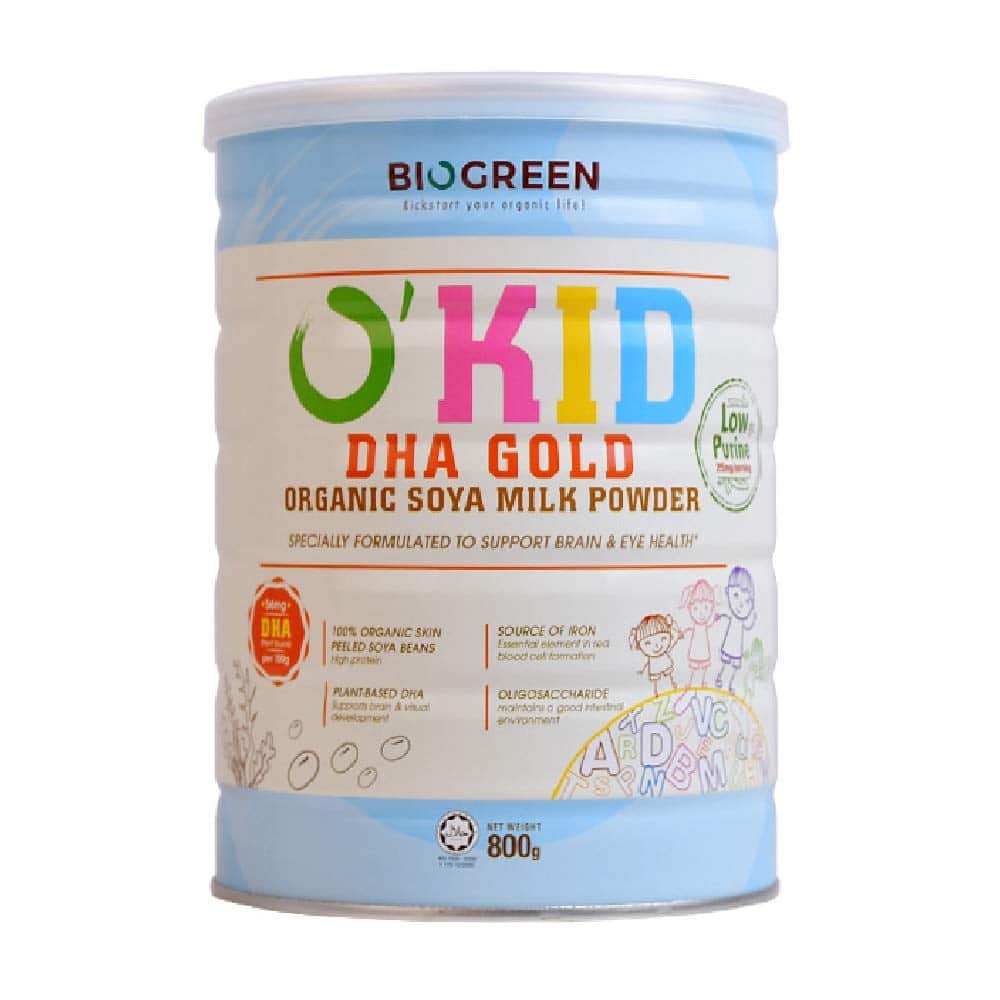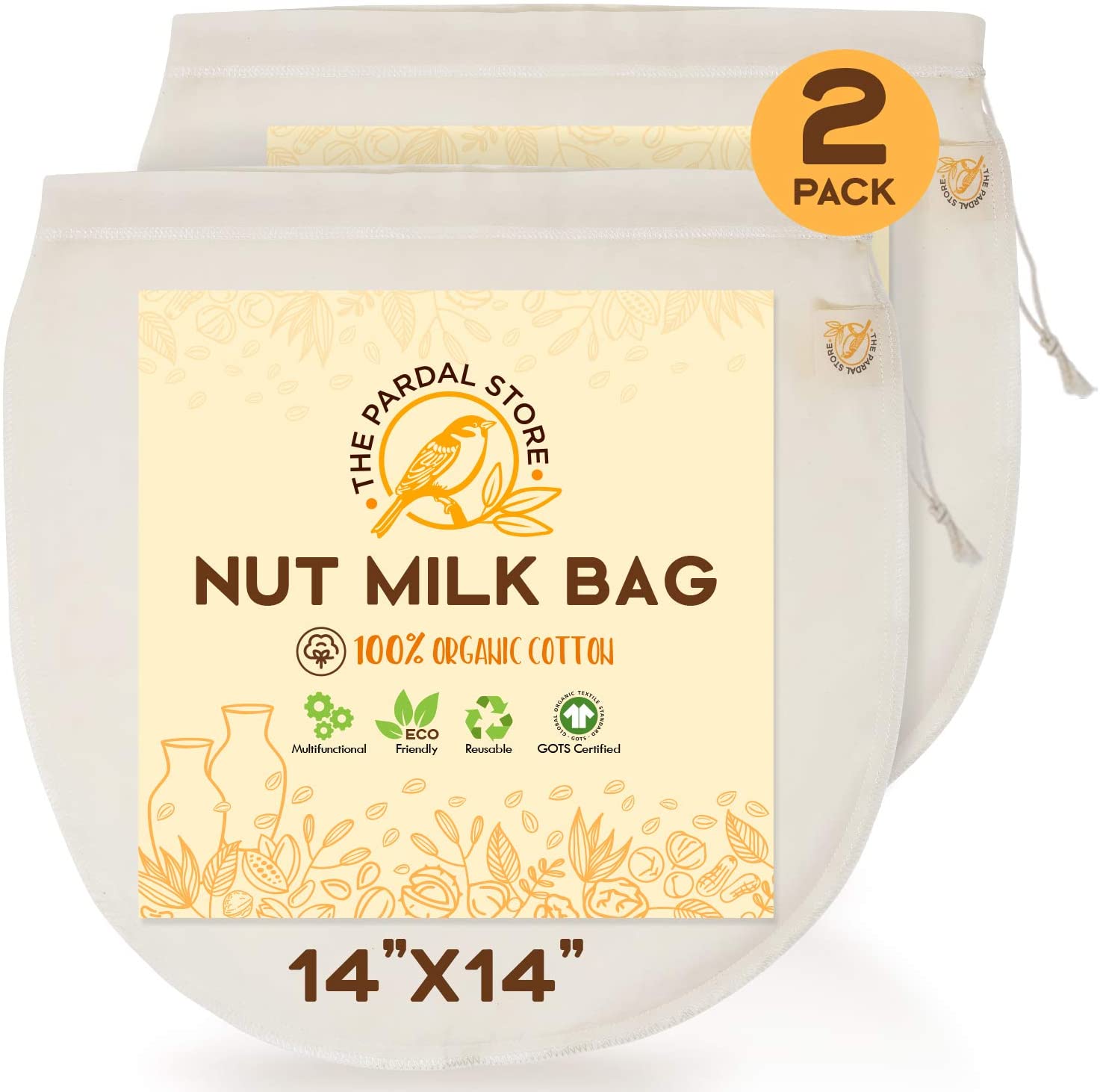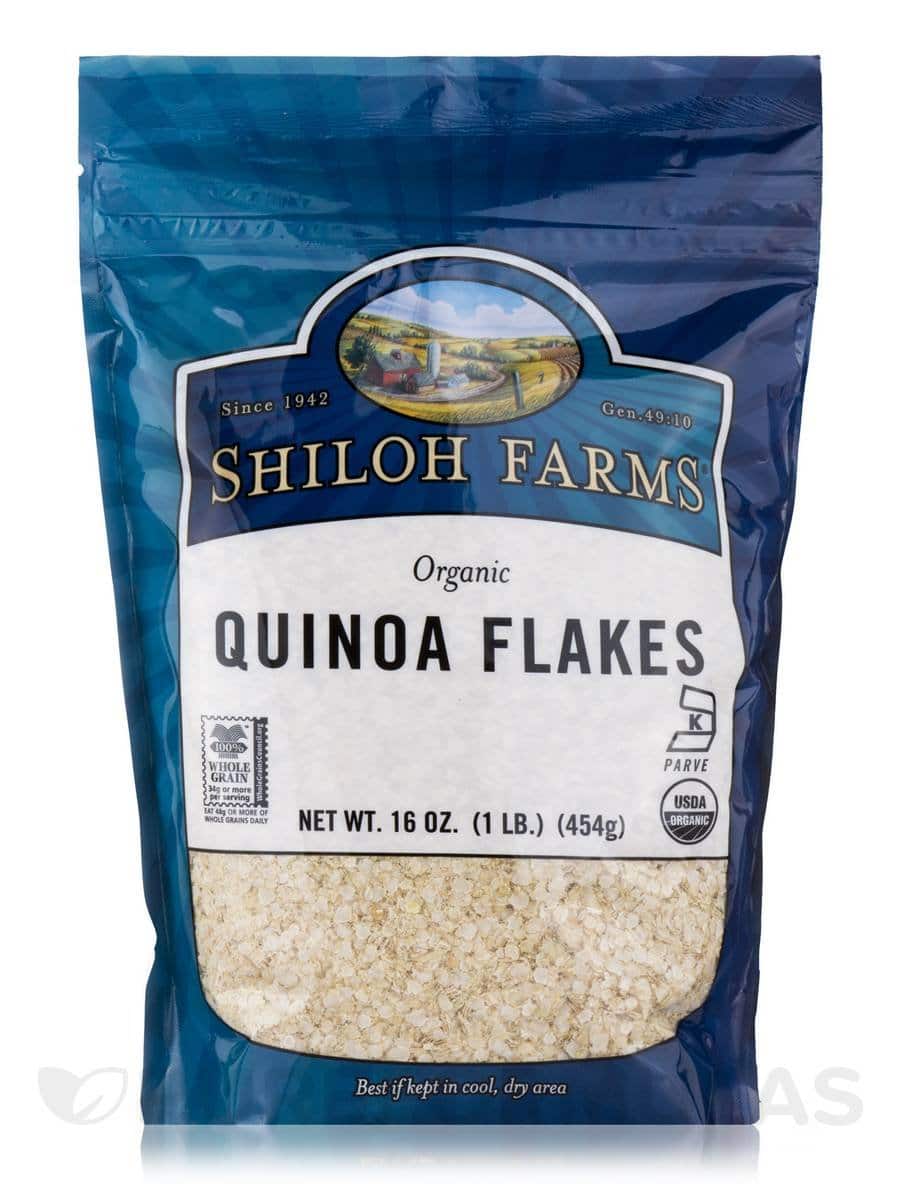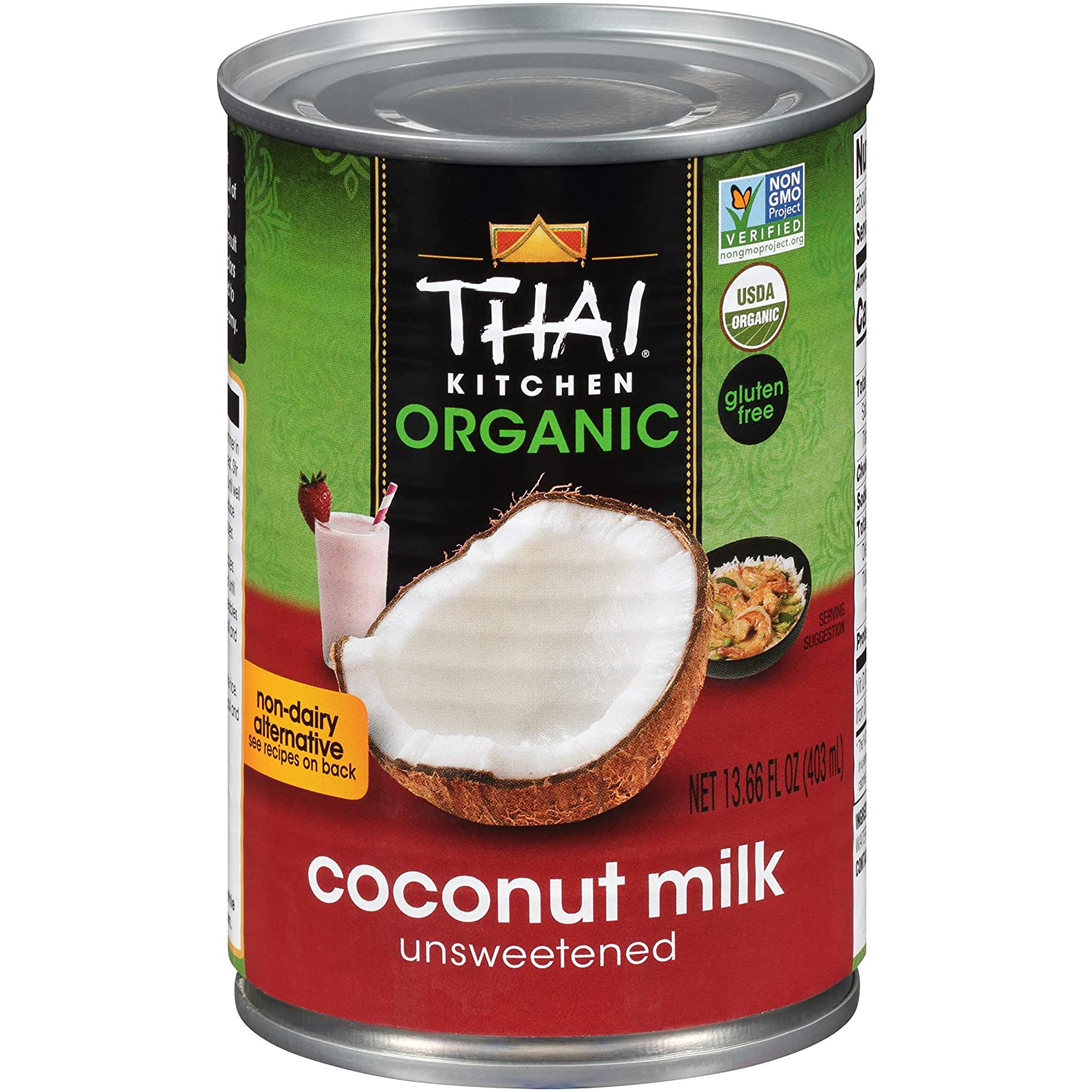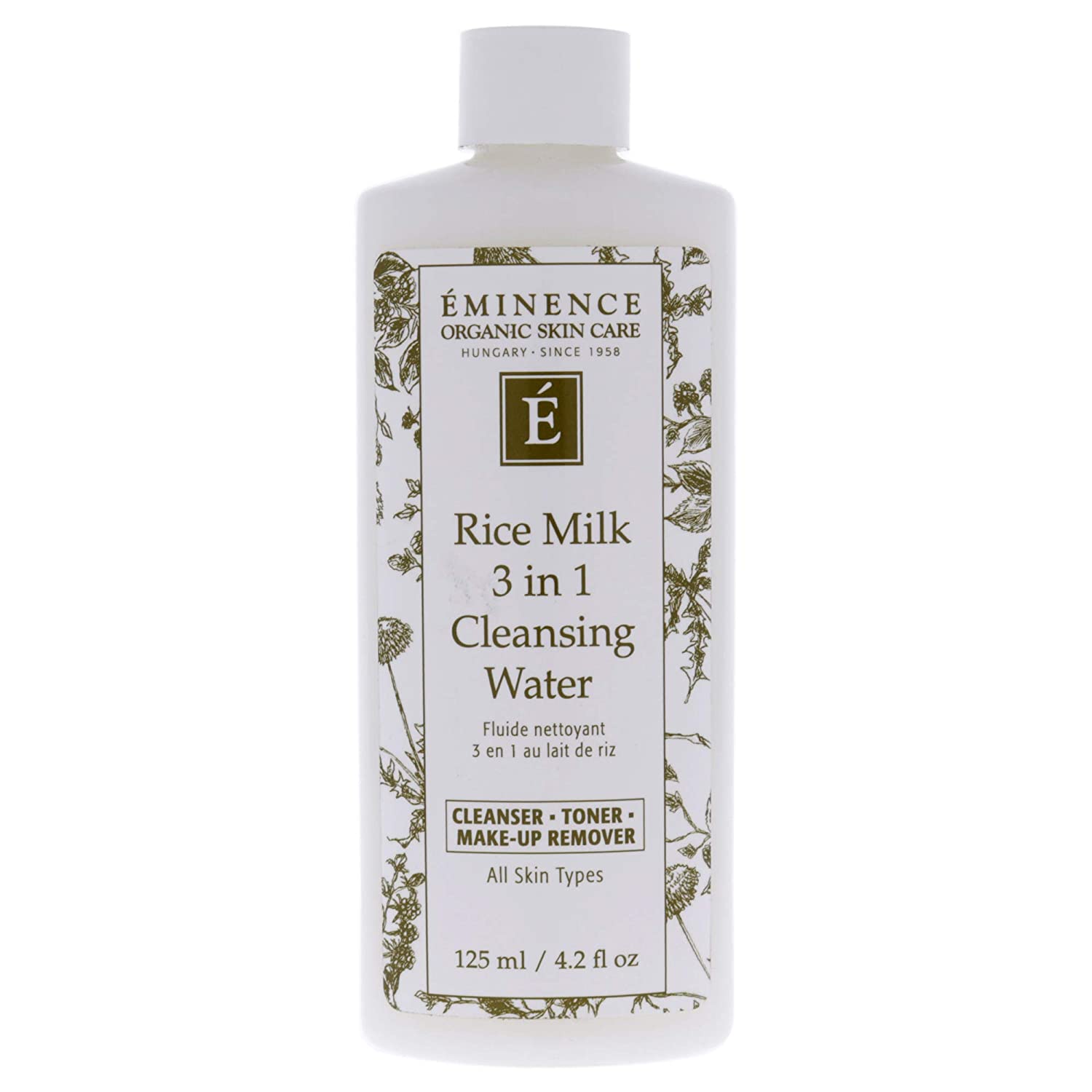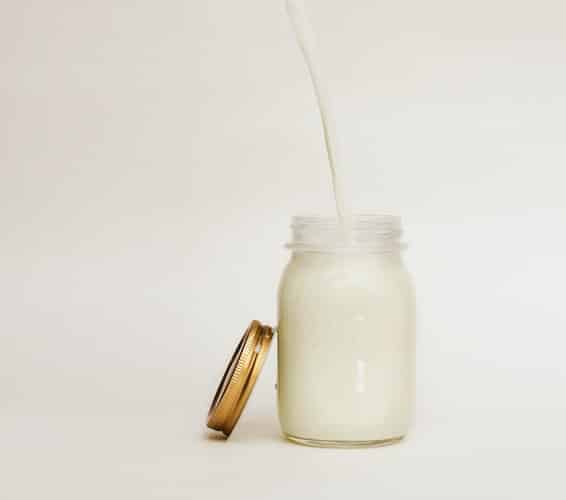Evaporated milk is a thick, creamy variation of cow milk rich in cow’s milk protein. This dairy variation came to be in the 19th century, when Nicolas Appert, in a quest to preserve milk in concentrated form, boiled raw cow milk in a water bath over the fire, then cooled the end product in glass bottles. To sterilize the milk, Appert heated the bottles for two hours in a boiling water bath.
Evaporated milk is manufactured by four processes of evaporation, concentration, homogenization, and sterilization. In the process of evaporation, 60% of water is dried out of fresh milk by slowly simmering it over low heat. This creates a concentrated and creamy version of the whole milk. The milk is then homogenized by forcing it under high pressure through tiny holes to break down fat globules and improve stability. Potassium phosphate is also used as a stabilizing salt and to improve texture. The finished product is then sterilized and stored in a can.
Evaporated milk contains 7.5-9.0% fat and 18-22% non-fat milk solids. This variation of milk has the longest shelf life, partly because of the stabilizers added in its production process but mainly because 60% of the water has been evaporated out of it. Evaporated milk has a mild caramel flavor to it and a slightly tan color. Its consistency has been compared to Half-and-half and Heavy Cream. But unlike those two, evaporated milk maintains its creamy texture but has a very minimal fat level – the most common version has about 1.5% fat.
Although evaporated milk can also be called condensed milk, the latter has, over the years, become synonymous with sweetened condensed milk. Sweetened condensed milk (SCM) is also produced just like evaporated milk but with sugar. The added sugar sweetens the highly concentrated milk and inhibits microorganisms’ growth, acting as a preservative.
The nutritional composition of evaporated milk is regulated internationally by the Codex Alimentarius Commission. But in the U.S, it is regulated by the Code of Federal Regulations (CFR). According to the CFR, evaporated milk should contain (by weight): 6.5% milk fat, 16.5% milk solids-not-fat (MSNF), and about 23% total milk solids.
One cup of evaporated milk contains 338 calories, 25grams carbs, 25grams sugar, 17 grams protein, and 19 grams fat. Also, evaporated milk is fortified with minerals like calcium, magnesium, and zinc. While calcium is needed for healthy bones (especially in developing kids), magnesium nourishes the brains, heart, and muscles. Also, zinc is necessary for proper digestion, growth, and immune function.
Other vitamins one gets from evaporated milk include phosphorus, Riboflavin (B2), pantothenic acid (B3), vitamin A, and vitamin D.One benefit of milk that is yet to be discovered by the masses is its hair and beauty potential. The minerals in evaporated milk can exfoliate dead skin from the body to reveal glowing and flawless skin. Also, evaporated milk can be used as a natural skin softener and gives smoothness to the skin. Evaporated milk can also act as a remedy for dry and rough hair, hair growth stimulator, and excellent hair conditioner.
Evaporated milk nutrition facts:
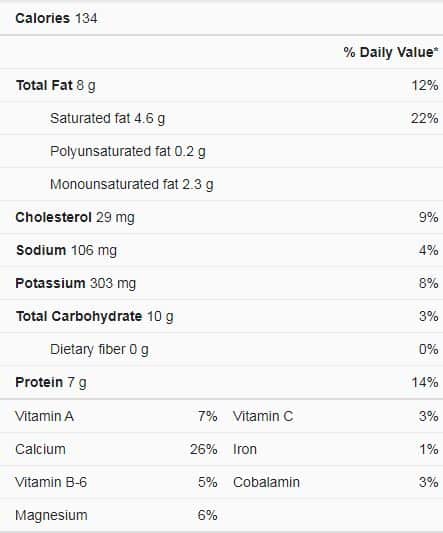
Uses of evaporated milk
Evaporated milk is used in baking, making desserts, cooking soups and sauces, or even added to coffee, tea, and smoothies for that creamy richness.
Here is a list of great recipes to make with evaporated milk:
- Mini white chocolate mud cakes
- Decadent mac and cheese
- Creamy chicken casserole
- Creamy bacon and mushroom pasta bake
- Mile-high chocolate meringue pie
- Milk-braised chicken
- Creamy pumpkin and pesto pasta bake
- Thai-flavored chicken
- Sweet potato meringue pie
- Baked spinach gratin
- Cream cheese
- Buttery baked chicken
Non dairy substitute for evaporated milk
I have made a long list of evaporated milk’s benefits; however, there are some situations where this item may need to be substituted for another. In this section, I will list and explain the best non-dairy substitute for evaporated milk.
Evaporated milk contains both lactose (a milk sugar that affects blood glucose level) and a high amount of cow’s milk protein, unsuitable for those who suffer cow’s milk allergy or lactose intolerance. If you are ovo-vegetarian (some people who avoid animal products for health, animal welfare, or religious reasons), you would want to consider plant-based milk substitutes. Or maybe you dislike the flavor evaporated milk gives. Below are the best dairy-free substitutes for evaporated milk.
Soy milk
Soy milk is made by grinding a mixture of soaked soybeans and water, then filtering out the larger parts. The remaining content is a white liquid that looks like dairy milk.
Nutritionally, soy milk is the closest to normal milk in calories, protein level, and digestibility. Lacking vitamins and minerals like calcium and vitamin D are usually added to commercially produced soy milk.
When heated, soy milk reduces its water content to resemble evaporated milk. Although the taste is slightly different, it is almost unnoticeable in most recipes.
Read More: Substitute for Milk in Cornbread
Nut milk
This is the best substitute if you are looking for low calories and protein option. Nuts like almonds, hazelnut, and cashew nuts are ground with water and then filtered to create a milk-like product.
Almond milk has sweet notes and can be used as a substitute in sweet recipes, while cashew milk will work well in sweet or savory dishes. This type of milk can also be evaporated to form the nice thick consistency of evaporated milk.
Quinoa milk
This milk is produced by soaking or cooking quinoa and blending it with water. It is easy to make at home. This substitute tastes nothing like evaporated milk. However, what it lacks in taste makes for in texture as quinoa milk is the thickest of all evaporated milk substitutes. It may be used in some recipes without thickening it. Homemade quinoa milk’s texture can be controlled by adding minimal water.
Coconut milk
This substitute contains almost the same level of calories as evaporated milk but is dairy-free. Also, it gives a special flavor to recipes. Coconut milk is produced from grated and squeezed coconuts. This milk resembles evaporated milk in consistency and doesn’t need thickening.
Rice milk and cornstarch
Rice milk is produced by grinding softened rice and water. This substitute is naturally low in calories and protein but has a high glycemic index. Rice milk is very light. To thicken it and give a cream-like consistency, add cornstarch.
Unlike evaporated milk, rice milk has a very sweet note and is safe to replace evaporated milk in very sweet recipes like desserts and baking.
Non dairy substitute for evaporated milk in creamy chicken casserole
The glorious and delicious look of this dish is legendary. The blend of texture is interesting, from the solid mushroom chunks to the dish’s creamy essence. As evaporated milk is the creamy base of this meal, quinoa milk will substitute perfectly because of its thick creaminess.
Non dairy substitute for evaporated milk in sweet potato meringue pie
In this recipe, evaporated milk is not added as a thickener but rather for its taste and nutritional values. Soy milk will perfectly substitute evaporated milk here because its taste will blend well with the ground cinnamon and nutmeg in your potato meringue pie.
Non dairy substitute for evaporated milk in buttery baked chicken
This meal naturally ignites salivation – especially when perfectly decorated with greens and sliced lime as finishing. Coconut milk will add an interesting twist to this meal’s taste while serving as a substitute for evaporated milk. It has the same consistency as evaporated milk, and the recipe doesn’t need much tweaking to adjust to the absence of evaporated milk.
Frequently asked questions [FAQs]
Can I use condensed milk instead of evaporated milk?
Condensed milk (sweetened condensed milk) is almost the same as evaporated milk but for the addition of sweetener. Yes, you can use condensed milk instead of evaporated milk in sweet recipes alone. However, this option is not dairy-free. For a dairy-free substitute, consider plant-based milk.
Is heavy cream the same as evaporated milk?
No, these two are not the same, although they are interchangeable in some recipes. While evaporated milk is whole milk that has been condensed to remove the majority of the water, heavy cream is derived from the settled, heavier part of whole milk that rises to the top due to its fat content.
Why use evaporated milk instead of whole milk?
Evaporated milk is preferred over whole milk in recipes because it can stand high temperatures without curdling. However, for your recipes that do not require cooking or heat, you can substitute evaporated milk with fresh milk by using twice the required evaporated milk measurement.
Conclusion
While choosing a substitute for evaporated milk in your recipe, consider the nutritional and taste profile. Some of these substitutes taste like evaporated milk, some wouldn’t tamper with your dish’s taste, while some will completely introduce a whole new taste to your dish. Finally, consider the cooking method. Some of these plant-based milk require cooking in heat to thicken up to the consistency of evaporated milk, while others can work without heat.
